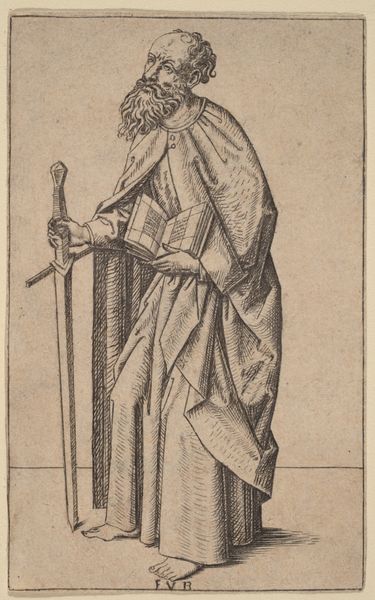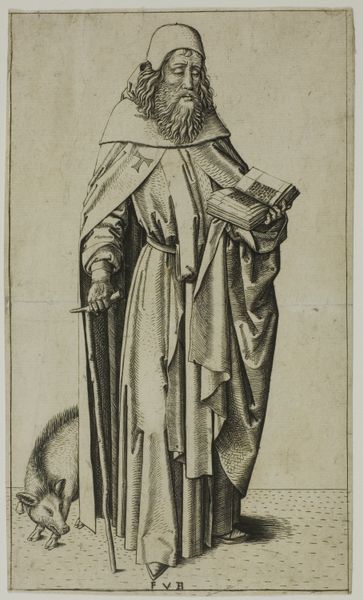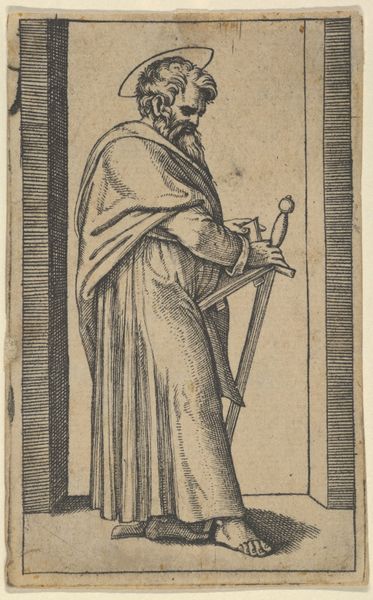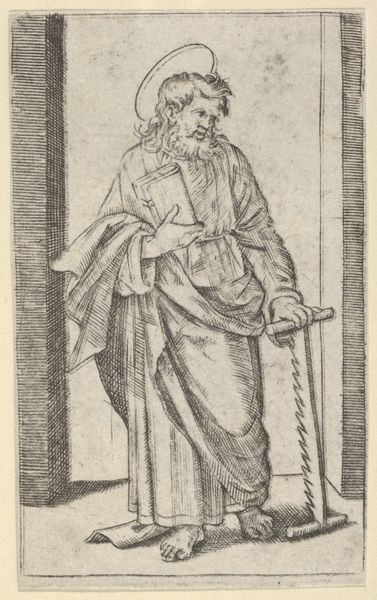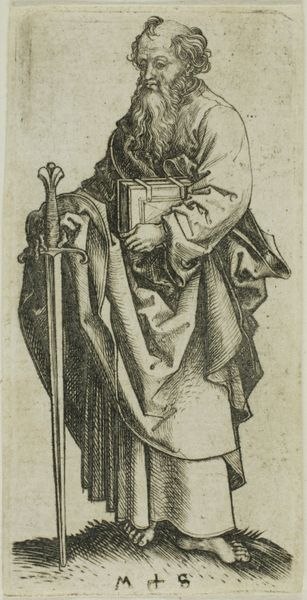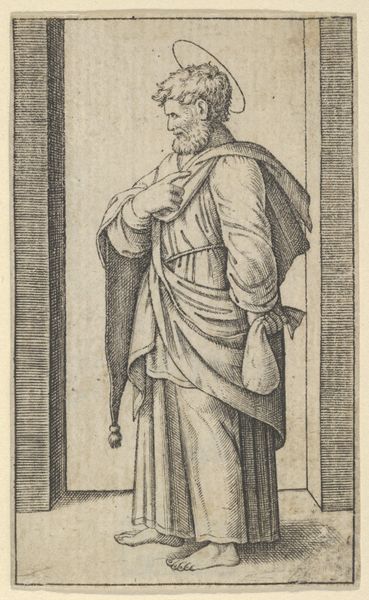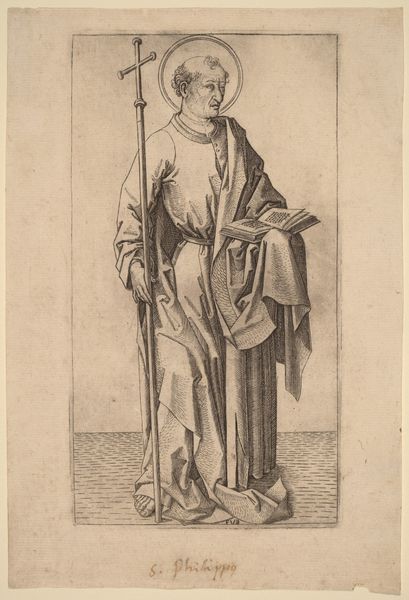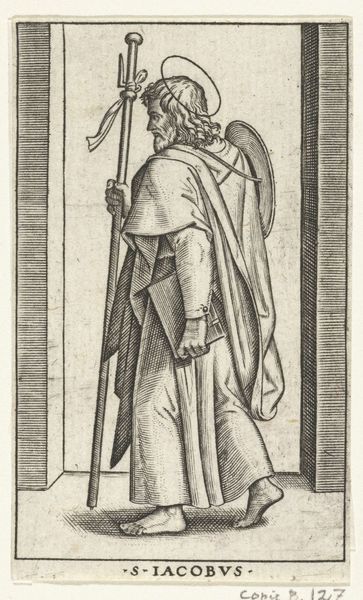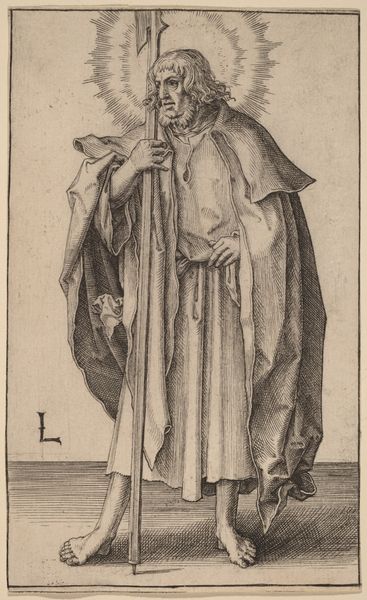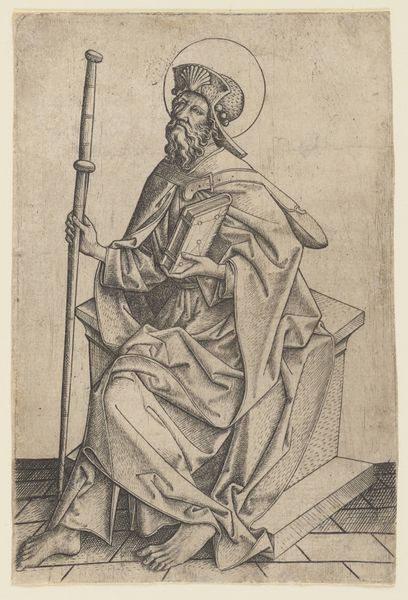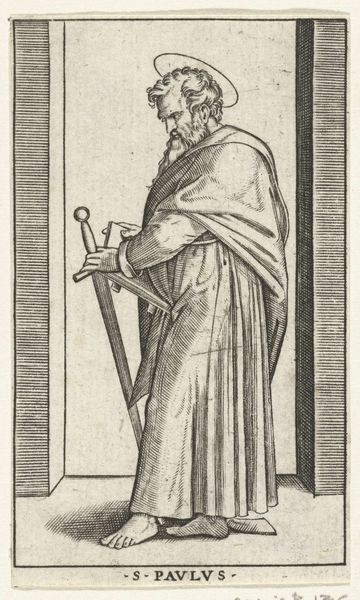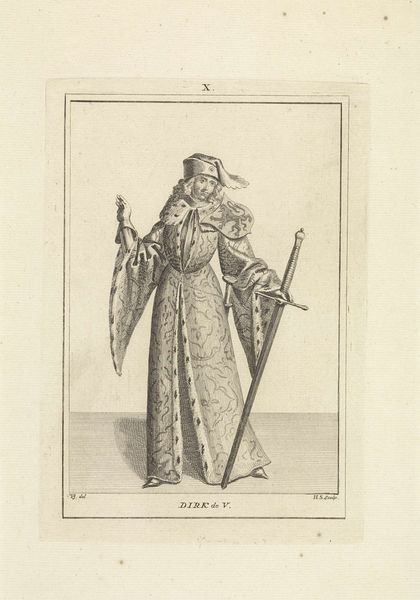
#
pencil drawn
#
toned paper
#
light pencil work
# print
#
pencil sketch
#
charcoal drawing
#
personal sketchbook
#
pencil drawing
#
portrait drawing
#
pencil work
#
watercolour illustration
Dimensions: plate: 18.3 × 9.9 cm (7 3/16 × 3 7/8 in.) sheet: 21.2 × 14.2 cm (8 3/8 × 5 9/16 in.)
Copyright: National Gallery of Art: CC0 1.0
Curator: This is "Saint Judas Thaddaeus," a print by Master FVB, dating from around 1490 to 1500. Editor: The immediate impression is one of austerity; the etching's stark lines give the figure a monumentality, even if the overall presentation feels rather somber and austere. Curator: It’s interesting how the artist has chosen to depict Saint Judas. The book in his hand represents his role as a writer of one of the epistles, but that peculiar saw...well, tradition says he was martyred by being sawn in half. Editor: The saw becomes then not simply a prop but the ultimate tool, or weapon, of his martyrdom. I am drawn to consider what kind of labor went into creating this image. What presses were available, the types of metal, the production that supported the creation of the print, and by whom this print would have been acquired. Curator: Precisely. Consider too the cultural memory embedded within. He carries this association, willingly it seems, and it defines our reading of him, the knowledge of it being transmitted through these symbols, in effect the material culture of faith itself. This is powerful in its condensation of meaning. The halo is an obvious visual symbol for the spiritual purity expected from him. Editor: Absolutely. This also prompts us to contemplate access, right? A print like this, compared to, say, a panel painting, made the saint, his image, and by extension his qualities more available to the masses. It democratizes devotion. Curator: It certainly extends the saint’s reach, enabling private contemplation and acting as a memory aid. And the linear emphasis feels very northern European; that stark almost gothic line, makes you wonder about iconographic relationships north of the Alps, where visual traditions mixed and melded over centuries, retaining threads and innovating in others. Editor: Thinking about the labour intensiveness with early printmaking, where mistakes could ruin an entire run, reminds us about not only the skill and the vision of the artist but the importance of the artisan, and the economic systems that supported such production and the flow of imagery to be accessible to broader audiences, beyond simply the wealthy elite. Curator: In short, this Saint Judas encapsulates an intriguing interplay between visual symbol and accessible piety, reminding us of the enduring power of images. Editor: An object wrought from skill, devotion, labor, available for spiritual consideration and more widespread reflection.
Comments
No comments
Be the first to comment and join the conversation on the ultimate creative platform.
